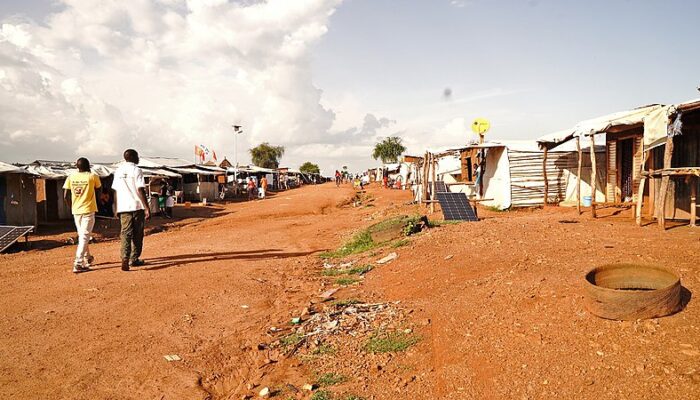Can Uganda’s global refugee-assisting image subsist in a possible shift in political regimes?
Uganda’s legacy of accommodating forcibly displaced people dates back to pre-independence when our British colonial masters offered refuge to 7,000 prisoners of war in 1942 during World War II. Standing with over 1.4 million forcibly displaced people, Uganda holds the highest refugee population on the African continent, and ranks fourth globally following Turkey, Colombia and Pakistan. In spite of the inevitable burdens and dynamics that come along with hosting such a large refugee population, Uganda has sustained her open-door policy to refugees fleeing violence and conflict in neighbouring countries, notably South Sudan, Democratic Republic of Congo, Rwanda, Burundi and Somalia. The majority of refugees are accommodated in settlements located in the West Nile and South-western regions. Refugees are allocated plots of land for habitation and cultivation purposes to promote self-sufficiency. Akin to any other refugee-hosting situation, Uganda’s current refugee regime has a number of stakeholders of whom the Government of Uganda (GoU) and local communities in the refugee-affected areas arguably rank highest. The former interests this particular article which argues in favour of, and questions, the political economic conditions that have influenced the government’s receptive attitude.
Political will to accommodate refugees
The government has furnished Uganda’s refugee situation with a 100 per cent political will and commitment for decades. In fact, some of the local communities surrounding refugee-affected areas perceive refugees as better placed than them because the latter have more access to clean water, education and health facilities and receive food rations. This article purports two main factors that motivate the Ugandan government’s political will. Firstly, the first-hand refugee experience of some highly placed political elites in government. Recalling Uganda’s dramatic political history, the current regime orchestrated its revolutionary struggles while they were in exile (as refugees). In his popular biography, Sowing the Mustard Seed, President Yoweri Museveni makes great reference to the time he spent in Tanzania as a student and political activist in the University of Dar-es-Salaam. He met some other Ugandan folks, many of whom are either serving or retired government officials today. In fact, the Financial Times revealed remarks made by a senior government official; “…many of us in this government have been refugees. We don’t want to see our brothers and sisters suffer because of the turmoil in their place.” Secondly, is the strategy of economic development in the rural refugee-affected districts. It was genius of the Ugandan government to adopt the Self-Reliance Strategy (SRS) in 1999 in which it tactfully integrated the refugee assistance provided by the UN Refugee Agency and its partners into the National Development Plan. The underlying objective of this strategy was to promote resource sharing where both refugees and locals can access the social services and facilities provided by the UNHCR and its partners. For instance, the schools, health facilities and boreholes constructed in refugee-affected areas serve both refugees and locals. Tania Kaiser ascribes the ingenuity of this strategy to the fact that the government has been able advance its development plans and political agenda in the marginalized districts in West Nile, for instance, where its bureaucracy is evidently absent.
What happens in case of a possible shift in political regimes?
Uganda’s political history has remained bereft of prospects of regime change, at least for the last three decades. In this case, it remains unpredictable how the country’s refugee policy will be affected in the event of regime change. However, if events in a neighboring country are something to go by, what lessons can we then learn from the political and economic shifts caused by the 1995 General elections in Tanzania? Patricia Ongpin (2008) notes that President Benjamin Mkapa (1938-2020) used anti-refugee sentiments at his campaigns to garner votes from the masses in Tanzania, who had become intolerant with Mwalimu Julius Nyerere’s open-door policy to refugees. The masses accused the Burundian refugees of causing environmental degradation, insecurity and competition for natural resources and social services. Indeed, the political regime of President Mkapa replaced Tanzania’s open-door policy with encampment, which confined the Burundian refugees to refugee camps with limited movement. The current refugee regimes of the Uganda and Tanzania share points of convergence on the economic front. For Nyerere, the Mwalimu policy recognized that Burundian refugees had agricultural skills which his government could use to advance the growing of commercial crops in the peripheral regions of the country. However, the Tanzanian political elites of the time did not have a first-hand experience of forced displacement, as in the case of Uganda.
In conclusion, the case of Tanzania presents a concrete reality that can befall the refugee regime in Uganda in case of a shift in political regimes. Indeed, it remains unpredictable, especially given that nearly half of Uganda’s population consists of young people, who may not relate as much with Uganda’s legacy of refugee accommodation. Further research regarding this phenomenon in the case of Uganda would be of great interest for refugee scholarship and future policy making.
